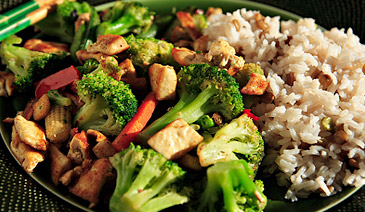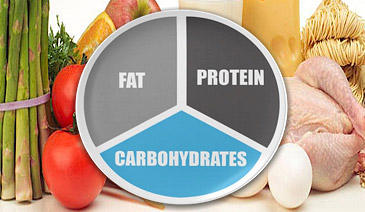LOSING STRENGTH WHILE CUTTING?
5 QUICK FIXES

Maintaining strength during a cut is one of the best indications that you’re successfully retaining lean muscle as well, making this a very important factor to pay attention to in your fat loss plan.
Unless you’re going through a prolonged cutting phase and are dropping a large amount of overall body weight (or are temporarily cutting to a very lean body fat percentage for a specific event), you really shouldn’t be losing much strength along the way if things are properly structured.
If anything, losing strength on a cut should only occur once you get into the deeper phases, and even then the reduction shouldn’t fall much beyond a couple reps for smaller isolation lifts and a very slight reduction in weight on larger compound movements.
In fact, some trainees can actually maintain 100% of their strength all the way through their cut, while some (particularly beginning lifters) can actually see a continual increase.
In any case, if you’ve found yourself feeling considerably weaker since your cut began and are watching your strength rapidly drop from week to week, something is definitely out of balance in your program and needs to be corrected.
You’ve worked hard to build up your muscle size and strength to this point, and the last thing you want to do is throw it away due to some simple errors in your cutting plan structure.
Here are the 5 main areas you’ll want to look at in order to maintain strength on a cut and ensure that the majority of your losses are coming in the form of body fat rather than strength and lean muscle…
Losing Strength While Cutting? 5 Tips
Tip #1: Increase Your Daily Calorie Intake

For those who find that they’re losing strength on a cut at an overly quick pace, an excessively low calorie intake is most often the primary mistake to blame.
Yes, you do need to maintain a calorie deficit over time in order to drop body fat, but going too low will quickly work against you by negatively impacting recovery and preventing your body from getting the energy and nutrients needed to maintain optimal training performance.
Aggressive deficits of 1000 calories or more below maintenance can be okay as a short-term approach for some dieters (also called a “mini cut“), but the effects will inevitably begin catching up after a few weeks and will quickly put your hard-earned muscle mass and strength at risk.
Unless you’re significantly overweight (in which case overall weight loss can safely occur at a slightly quicker pace), losing any more than about 1-2 pounds per week on a consistent basis is a good indication that your daily calorie intake is set too low and needs to be increased.
How many calories should you consume per day to properly maintain strength during a cut?
A good guideline for most trainees would be to set their daily intake at about 500 calories below their calorie maintenance level.
This amount is large enough to produce significant weekly fat loss, but small enough that your strength, muscle mass and overall training performance will be maintained.
If you’re not sure what your current calorie maintenance level is, multiplying your body weight in pounds by 14-16 (going with the higher or lower end depending on your overall weekly activity level) can give you a rough estimation assuming your current body fat is still somewhere around the normal healthy range.
If you’re more on the overweight side, I’d recommend using the “Katch McArdle Formula” below since it takes your actual body fat levels into account to provide a more accurate figure.
First, calculate your basal metabolic rate (number of calories burned at rest):
BMR = 370 + (9.79 x Lean Mass in pounds)
Or
BMR = 370 + (21.6 x Lean Mass in kilograms)
Lean mass refers to any type of body weight that is NOT fat. So, if you weighed 225 pounds with 28% body fat, you’d be carrying 63 pounds of fat and 162 pounds of lean mass.
Then, multiply your BMR by the appropriate activity level below:
1.200 = sedentary (little to no exercise)
1.375 = light activity (light exercise 1-3 days a week)
1.550 = moderate activity (moderate exercise 3-5 days a week)
1.725 = very active (intense exercise 6-7 days a week)
1.900 = extra active (intense daily exercise + strenuous job)
Keep in mind that all calorie calculators are just estimates, so treat whatever caloric figure you end up with as an initial starting point and then adjust from there depending on how much weight you’re losing per week.
Tip #2: Balance Out Your Macronutrient Breakdown

Assuming your overall calorie intake is set at the proper level, the next thing to take a look at is your protein, carbohydrate, and fat consumption.
You don’t need to obsess over every single gram of each that you’re consuming in order to get great results, but if there’s a significant imbalance between them it can definitely have a negative effect on your strength levels.
Go too low on protein and you’ll impair recovery in between weight training sessions since protein is responsible for building and repairing muscle tissue…
Cut your carbs too far and you’ll see a decrease in workout performance since carbohydrates are the body’s preferred source of fuel…
Drop your fat intake significantly and your mood, motivation, and mental functioning will be compromised, which in turn could negatively impact your training sessions as well.
Your daily macronutrient breakdown doesn’t need to be perfect, but during a focused cutting phase it does become more important since you’ll have fewer total calories to work with and the chances that you’ll under-consume one or more of them will increase.
In order to ensure that you’re getting enough total protein, carbs, and fats to minimize strength loss while cutting, here’s the basic macronutrient breakdown I’d recommend roughly following after you’ve figured out your daily calorie intake:
Protein: 0.8-1 gram per pound of body weight daily.
Fats: 25% of total calories.
Carbs: Whatever calories are left over after protein and fat is calculated.
In order to calculate this you just need to know that proteins contain 4 calories per gram, fats contain 9 calories per gram, and carbohydrates contain 4 calories per gram.
Tip #3: Cut Back On The Cardio

I always recommend that trainees include some cardio as part of their training plan, both as a way of burning additional calories (allowing for greater food intake) and improving overall physical and mental health.
However, if you want to maintain strength during a cut as effectively as possible, it’s important that you don’t go overboard.
You don’t need to be running on the treadmill 5-6 days a week in order to lose fat at an optimal rate. Performing too much can easily compromise recovery in between workouts and interfere with weight training performance.
Keep in mind that your recovery resources are already limited due to being in a calorie deficit, and you don’t want to exacerbate this further by performing endless amounts of unnecessary cardio on top of everything you’re already doing.
My recommendation is to start off with no more than 3 cardio sessions per week, and to only increase the frequency later on if your fat loss stalls as you get deeper into your cut.
Tip #4: Avoid The “Light Weight/High Reps” Mentality

This is a very common error that lifters make when shifting from a bulking phase to a cutting phase, and it’s one of the main reasons why they end up losing more strength and muscle than they expected.
Don’t fall into the trap of thinking that “heavy weight and low reps builds muscle” while “light weight and high reps defines the muscle.”
This is totally false, since you can’t “spot reduce” fat loss from specific areas of your body by training those areas with weights.
Resistance training targets only the muscles that are involved in the exercise and NOT the fat surrounding that area.
Bench presses do not burn fat off your chest… tricep extensions do not burn fat off your arms… and leg curls do not burn fat off your hamstrings…
Fat loss only occurs on a total-body scale as you keep yourself in a calorie deficit over time.
Muscle definition is simply a product of your overall body fat percentage in combination with how much total muscle mass you’re carrying. It has nothing to do with which specific exercises you perform or how many reps you’re doing.
When you switch to a light weight/high rep program at the expense of all heavy/lower rep work, all you’re really doing is weakening the overall training stimulus and giving your body less incentive to maintain its existing strength and muscle.
To combat this, make sure to keep the overall structure of your weight training program the same as it was during your bulking phase.
Including some lighter, higher rep work is fine, but basic heavier training should always form the underlying foundation of your workouts.
Tip #5: Reduce Your Training Volume

If all 4 of the previous points have been taken care of and you find that you’re still losing strength while cutting, try reducing your overall weekly training volume as well.
This won’t always be necessary during a fat loss phase since it depends on many different factors. But if your strength is continuing to quickly drop from week to week, go ahead and reduce the total workload by about 25% to ensure that you aren’t training beyond your ability to recover.
Keep in mind that your primary goal during a cutting phase is to provide just enough stimulus to maintain your existing lean mass. You don’t need to be in the gym performing high volume workouts 6 days a week in order to accomplish this.
Since your body has fewer recovery resources available during a cut (as well as less fuel to get through your workouts), performing too many total sets can begin to work against you if you aren’t careful.
3 Additional Quick Tips To Maintain Strength While Cutting

For the majority of trainees, employing the 5 tips above should correct things and ensure that you don’t lose any more strength during your fat loss phase.
However, if you want to fully optimize your plan and maintain strength while cutting to the highest possible degree, here are 3 more quick tips you can employ:
- If you currently train in the earlier morning hours, try shifting your workouts into the late afternoon/early evening hours if it suits your schedule. Due to the functioning of the body’s circadian rhythm, strength levels tend to peak later on in the day, which could provide a small extra boost for you.
- Start incorporating a weekly refeed day into your plan. A refeed day involves eating at your calorie maintenance level with the increase coming primarily from carbohydrates. Position your refeed the day before your most challenging workout of the week in order to improve performance for that session. This could even be done twice a week if you’re quite deep into your cutting phase and are getting down to a fairly low body fat percentage.
- If you aren’t currently using any pre-workout supplements in your program, try adding in a basic stack prior to your sessions. A simple but effective combination is to consume 100-200mg of caffeine anhydrous along with 1000-3000mg l-tyrosine 30-45 minutes before training.
If you found this article helpful, make sure to sign up for your FREE custom fitness plan below...





5 QUICK FIXES